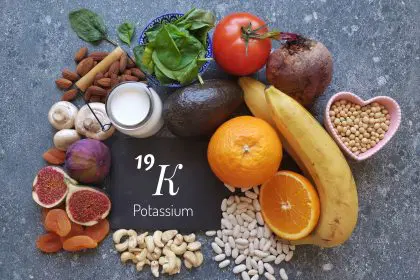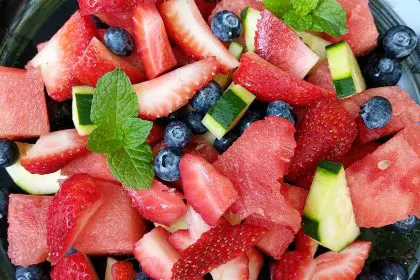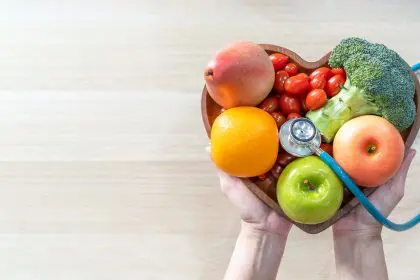The modern diet often falls short of providing the nutrients needed for optimal digestive health, leaving millions struggling with uncomfortable symptoms and compromised gut function. Two categories of foods hold particular power in transforming digestive wellness: fiber-rich options that feed beneficial bacteria and fermented foods that introduce helpful microorganisms directly into the digestive system.
Understanding how to incorporate these nutritional powerhouses into daily meals can revolutionize health outcomes while adding exciting flavors and textures to familiar dishes. The key lies in making gradual changes that feel natural and sustainable, allowing the digestive system to adapt while building long-term healthy eating habits.
Why fiber becomes essential for digestive wellness
Dietary fiber serves as fuel for the beneficial bacteria residing in the large intestine, supporting a thriving microbial ecosystem that influences everything from immune function to mood regulation. The fermentation process that occurs when bacteria break down fiber produces short-chain fatty acids, compounds that provide energy for intestinal cells and help maintain gut barrier integrity.
Most adults consume only half the recommended daily fiber intake, creating an environment where harmful bacteria can outnumber beneficial ones. This imbalance contributes to digestive discomfort, irregular bowel movements, and increased inflammation throughout the body.
Soluble fiber dissolves in water to form a gel-like substance that slows digestion and helps regulate blood sugar levels. This type of fiber also binds to cholesterol particles, helping remove them from the body and supporting cardiovascular health. Foods rich in soluble fiber include oats, beans, apples, and citrus fruits.
Insoluble fiber adds bulk to stool and helps food move through the digestive tract more efficiently. This type promotes regular bowel movements and prevents constipation while reducing the risk of digestive complications. Whole grains, vegetables, and nuts provide excellent sources of insoluble fiber.
Why fermented foods enhance gut health naturally
Fermented foods contain live beneficial bacteria that can colonize the digestive tract and support microbial diversity. These probiotics help crowd out harmful bacteria while producing compounds that strengthen the intestinal lining and enhance immune function.
The fermentation process also increases the bioavailability of nutrients, making vitamins and minerals easier for the body to absorb. Many fermented foods provide enhanced levels of B vitamins, vitamin K2, and other nutrients that support overall health beyond digestive benefits.
Traditional fermentation methods preserve foods naturally while creating unique flavors and textures that add interest to meals. The tangy, complex tastes of fermented foods can enhance the overall dining experience while providing health benefits.
Regular consumption of fermented foods helps maintain digestive balance during times of stress, travel, or dietary changes that might otherwise disrupt gut health. The protective effect of beneficial bacteria creates resilience against digestive upset and supports consistent digestive function.
1. Start your morning with fiber-rich breakfast foundations
Transforming breakfast into a fiber powerhouse sets a positive tone for the entire day’s nutrition. Oatmeal provides an excellent base that can be enhanced with berries, ground flaxseed, and chopped nuts to create a satisfying meal that delivers both soluble and insoluble fiber.
Chia seeds mixed into yogurt or smoothies expand when exposed to liquid, creating a pudding-like texture while providing substantial fiber content. These tiny seeds also deliver omega-3 fatty acids and plant-based protein, making them a nutritional powerhouse for morning meals.
Whole grain toast topped with avocado combines the fiber benefits of intact grains with the healthy fats and additional fiber found in avocados. Adding sliced tomatoes or sprouts increases the fiber content further while creating a visually appealing and satisfying breakfast.
Smoothie bowls offer endless opportunities to incorporate fiber-rich ingredients like spinach, kale, berries, and ground flaxseed. The thick consistency allows for toppings like granola, coconut flakes, and fresh fruit that add both fiber and satisfying texture contrasts.
2. Incorporate fermented vegetables into lunch and dinner
Sauerkraut and kimchi provide probiotics along with vegetable fiber, creating a double benefit for digestive health. These fermented cabbage preparations can be added to sandwiches, grain bowls, or served as side dishes to increase both flavor complexity and nutritional value.
Fermented pickles offer a crunchy, tangy addition to meals that provides beneficial bacteria without overwhelming flavors. Choosing naturally fermented varieties ensures maximum probiotic content compared to vinegar-based pickles that lack live cultures.
Miso paste creates flavorful bases for soups, marinades, and salad dressings while introducing beneficial bacteria and umami flavors. The fermented soybean paste dissolves easily into liquids and adds depth to both Asian and fusion cuisine preparations.
Tempeh serves as a protein-rich fermented food that can replace meat in many dishes while providing fiber and probiotics. The nutty flavor and firm texture make it suitable for grilling, stir-frying, or crumbling into grain-based salads.
3. Transform snacks into fiber delivery systems
Apple slices paired with almond butter combine fruit fiber with the additional fiber found in nuts while providing sustained energy between meals. The combination of fiber, healthy fats, and natural sugars creates satisfaction that prevents overeating at subsequent meals.
Hummus with raw vegetables creates a protein and fiber combination that supports stable blood sugar levels. Carrots, bell peppers, cucumber, and celery provide different types of fiber while the chickpea-based dip adds both soluble fiber and plant-based protein.
Trail mix combining dried fruits, nuts, and seeds delivers concentrated fiber along with healthy fats and natural sweetness. Creating homemade versions allows control over ingredients and sugar content while ensuring maximum nutritional benefit.
Roasted chickpeas seasoned with herbs and spices provide a crunchy snack that delivers substantial fiber and protein. The portable nature makes them convenient for busy schedules while supporting digestive health throughout the day.
4. Enhance grain dishes with fiber boosters
Adding beans or lentils to rice dishes increases both fiber and protein content while creating more satisfying and nutritionally complete meals. The combination of grains and legumes provides all essential amino acids while delivering substantial fiber benefits.
Quinoa naturally contains more fiber than many other grains and can be enhanced further by mixing in chopped vegetables, nuts, or seeds. The complete protein profile and fiber content make quinoa an excellent base for both hot and cold grain salads.
Barley and farro provide chewy textures and nutty flavors along with impressive fiber contents. These ancient grains work well in soups, risotto-style preparations, or as bases for grain bowls topped with vegetables and proteins.
Wild rice mixed with brown rice creates interesting texture contrasts while providing higher fiber content than white rice alone. The combination works well in stuffings, pilafs, and cold salads that benefit from varied textures and enhanced nutritional profiles.
5. Integrate fermented dairy products strategically
Greek yogurt contains beneficial probiotics along with protein that supports satiety and muscle health. Choosing plain varieties and adding fresh fruits, nuts, or granola allows control over sugar content while maximizing probiotic benefits.
Kefir provides a drinkable source of probiotics that can be consumed plain or blended into smoothies with fiber-rich fruits and vegetables. The liquid consistency makes it easy to incorporate into daily routines while delivering substantial microbial diversity.
Aged cheeses like gouda, cheddar, and swiss contain beneficial bacteria along with protein and calcium. Pairing these cheeses with fiber-rich crackers or fresh fruits creates satisfying snacks that support both digestive and bone health.
Buttermilk can be used in baking, marinades, or consumed as a beverage to provide probiotics along with tangy flavor. The acidic nature helps tenderize proteins while contributing beneficial bacteria to the diet.
6. Maximize vegetable fiber through preparation methods
Leaving skins on potatoes, apples, and other produce increases fiber intake significantly while reducing food waste. The skins often contain concentrated nutrients along with substantial fiber content that enhances both nutrition and satisfaction.
Roasting vegetables with olive oil and herbs creates caramelized flavors while preserving fiber content. The cooking method makes vegetables more appealing to reluctant vegetable eaters while maintaining nutritional benefits.
Raw vegetables in salads provide maximum fiber content along with enzymes that may support digestion. Mixing different textures and colors creates visually appealing dishes that encourage increased vegetable consumption.
Vegetable-based soups concentrate fiber from multiple sources while providing hydration and satisfaction. Blending some vegetables while leaving others chunky creates interesting textures while maximizing fiber delivery.
7. Create fiber-rich beverage options
Green smoothies blend leafy vegetables with fruits to mask bitter flavors while delivering substantial fiber and nutrients. Spinach and kale blend easily with sweet fruits like mangoes and berries to create palatable and nutritious beverages.
Kombucha provides probiotics in liquid form along with unique flavors that can satisfy cravings for carbonated beverages. The fermented tea offers beneficial bacteria while potentially reducing consumption of less healthy drink options.
Chia seed drinks expand in liquid to create filling beverages that provide both fiber and omega-3 fatty acids. Mixing chia seeds with coconut water or fruit juices creates refreshing drinks with substantial nutritional benefits.
Vegetable juices retain some fiber content while providing concentrated nutrients from multiple vegetables. Adding pulp-rich juices or blending rather than juicing maximizes fiber retention while creating satisfying beverages.
8. Plan meals that combine fiber and fermented foods
Grain bowls topped with fermented vegetables, nuts, and seeds create complete meals that address multiple nutritional needs while providing satisfying textures and flavors. The combination approach maximizes both fiber and probiotic benefits.
Stir-fries incorporating tempeh or miso-based sauces along with high-fiber vegetables create balanced meals that support digestive health. The cooking method preserves vegetable fiber while allowing flavors to meld harmoniously.
Salads featuring fermented elements like pickled vegetables or yogurt-based dressings combined with fiber-rich ingredients create refreshing meals perfect for warmer weather. The raw vegetables provide maximum fiber while fermented additions enhance flavor complexity.
Soup preparations that include both fibrous vegetables and fermented ingredients like miso or sauerkraut create warming, satisfying meals that support digestive wellness. The liquid base helps with hydration while concentrated nutrients support overall health.
Gradual implementation ensures long-term success
Starting with small changes prevents digestive discomfort that can occur when fiber intake increases too rapidly. Adding one new fiber-rich food or fermented item per week allows the digestive system to adapt gradually while building sustainable habits.
Drinking plenty of water becomes especially important when increasing fiber intake, as adequate hydration helps fiber function properly in the digestive system. The combination of increased fiber and water supports regular bowel movements and prevents constipation.
Monitoring individual responses to different foods helps identify which options work best for each person’s unique digestive system. Some people tolerate certain fermented foods better than others, making personalized approaches most effective.
The benefits of increased fiber and fermented food consumption often become noticeable within days to weeks, providing motivation to continue the dietary improvements. Enhanced energy, improved digestion, and better overall well-being create positive reinforcement for maintaining these healthy eating patterns.














